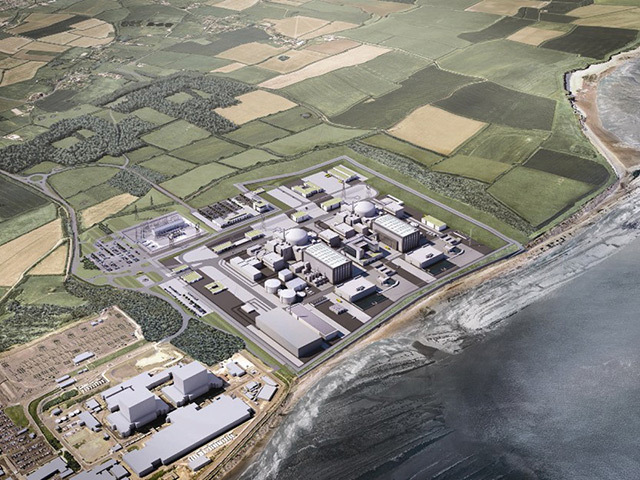
Energy giant EDF has revealed details of the progress in building the first new nuclear power station in a generation, including a sea wall, accommodation for workers and tunnels to carry cabling and pipes.
Around 1,600 workers are now on the Hinkley Point C (HPC) site in Somerset, the first concrete has been poured for the tunnels and three million cubic metres of earth has been moved.
EDF said three million tonnes of concrete and 230,000 tonnes of steel reinforcement will be used in the construction of the £18 billion project.
A temporary jetty in the Bristol Channel has started to be built, allowing 80% of the aggregate to be brought to the site by sea, with every shipload of materials equivalent to 250 lorry loads.
The first two tower cranes have been erected, up to 40 metres high, with another 50 due on site at the peak of building work.
Hinkley Point C Project Director Philippe Bordarier said: “Pouring the concrete for the first permanent structure of HPC is a significant milestone. It is the outcome of many years of preparation and hard work from all our teams and supply chain across the UK and France.
“It demonstrates our ability to undertake the serious responsibility of nuclear power plant construction. Whilst we reflect on this great achievement, we will continue to look for opportunities to improve, learn and teach others, embracing the values of the HPC project.”
EDF Energy’s Managing Director for New Nuclear Build, Humphrey Cadoux-Hudson, said: “We’re making good progress on many fronts as a result of the successful collaboration between all our teams.
“Our construction partners BYLOR and Kier Bam have played a particularly important role in getting us to this point. We are very proud to be building the first new nuclear power station in a generation which will provide the UK with reliable, affordable, low carbon electricity for the future.”
Hinkley Point C will provide 25,000 job opportunities and 1,000 apprenticeships with many of the jobs going to people living in Somerset.
Around £435 million worth of contracts have been signed so far with businesses in the region.
The power station will provide enough electricity to meet 7% of the UK’s future needs.
Construction of the first reactor is scheduled to start in 2019 and the station will start producing power in 2025.
Recommended for you
